
As the summer season draws to a close, we’re looking forward to a sky full of autumnal constellations, conjunctions, and more! September will also bring the autumnal equinox, the official beginning of the fall season. Read on to learn about what’s up in the cosmos this month, and don’t forget to tune into the latest installment of our monthly YouTube series, Mars Hill Almanac.
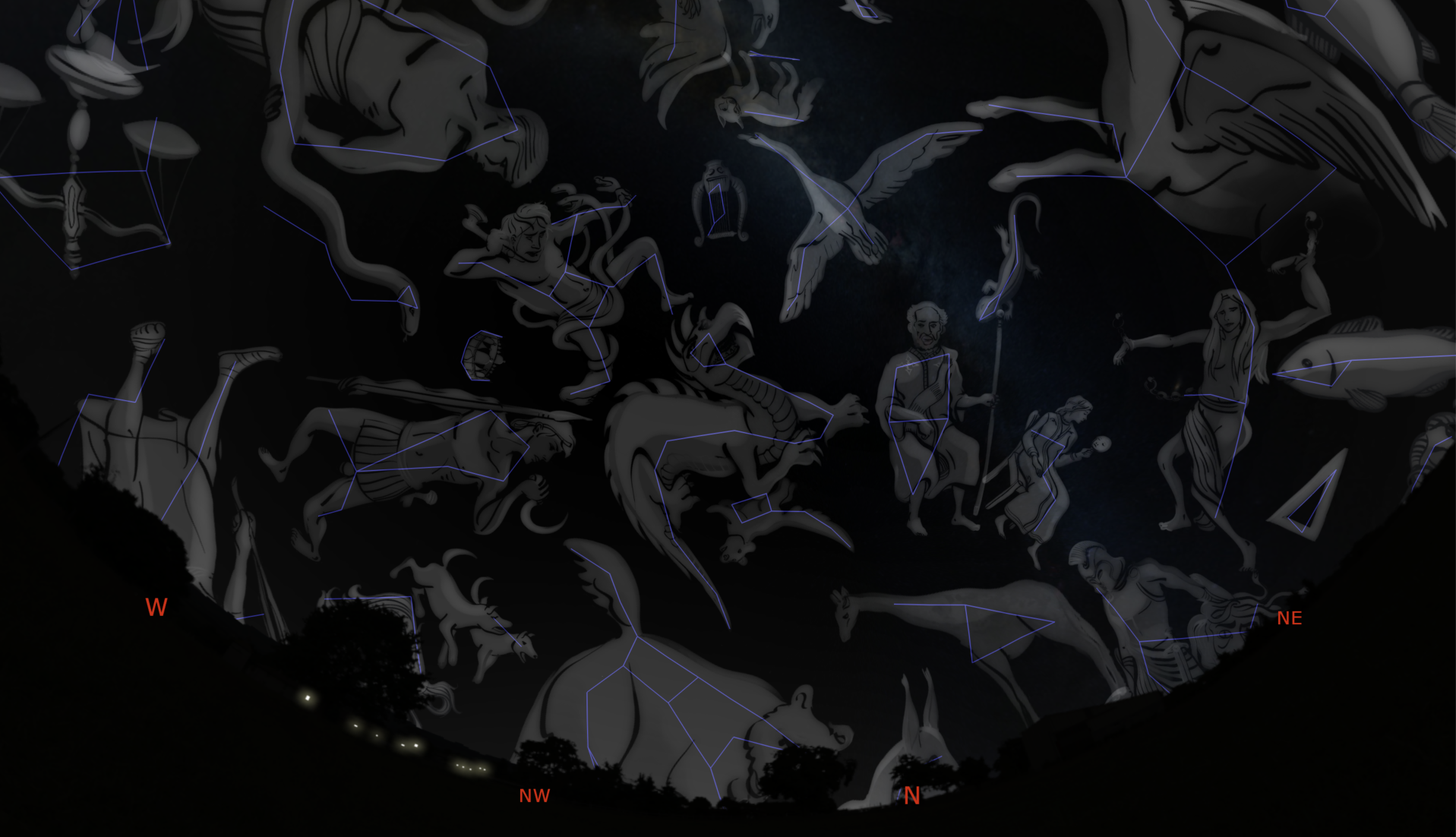
Night Sky Viewing
Planets and More
Visible planets this month will include Venus, Mercury, Jupiter, Saturn, Mars, Neptune. Throughout the month, Jupiter and Saturn will be visible from dusk onward in the southern sky. Venus will be visible in the very early evening, setting just after the Sun in the western sky. Mercury may be faintly visible after sunset for those with an unobstructed western horizon on September 14, but it will generally be difficult to observe this month. Neptune will reach opposition with the Sun on the 14th, meaning that it will rise at around the same time as the Sun sets. September’s full Moon is known as a “Full Corn Moon” or the “Harvest Moon,” as it is the closest full moon to the autumnal equinox.
September 4 – 6 | Venus-Spica Conjunction
Towards the beginning of the month, Venus will be in conjunction with Spica, the brightest star in the constellation Virgo. To see these two objects light up the sky, look to the western horizon just after sunset.
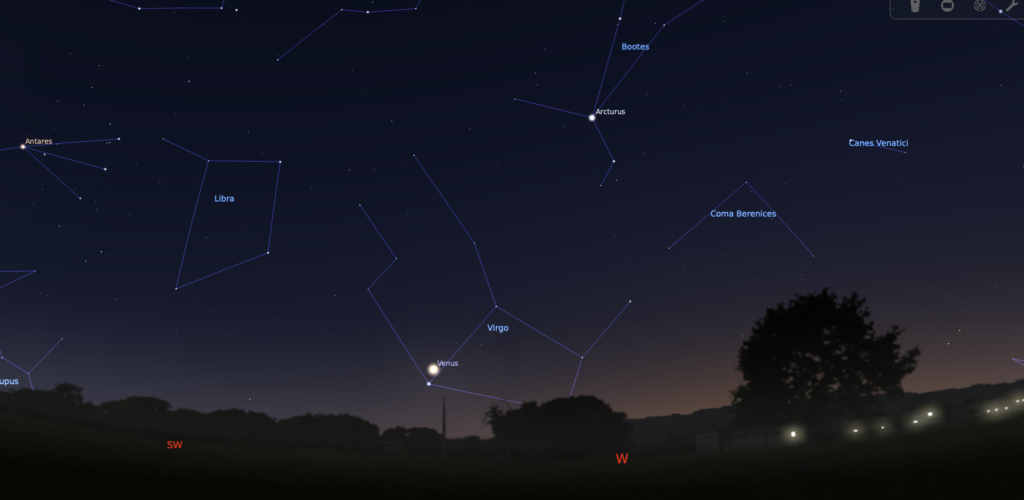
September 22 | The Autumnal Equinox
On this day, the plane of Earth’s equator will point directly at the Sun, so day and night will be roughly the same length around the world. The equinox also marks the beginning of astronomical autumn in the northern hemisphere, and astronomical spring in the southern hemisphere.
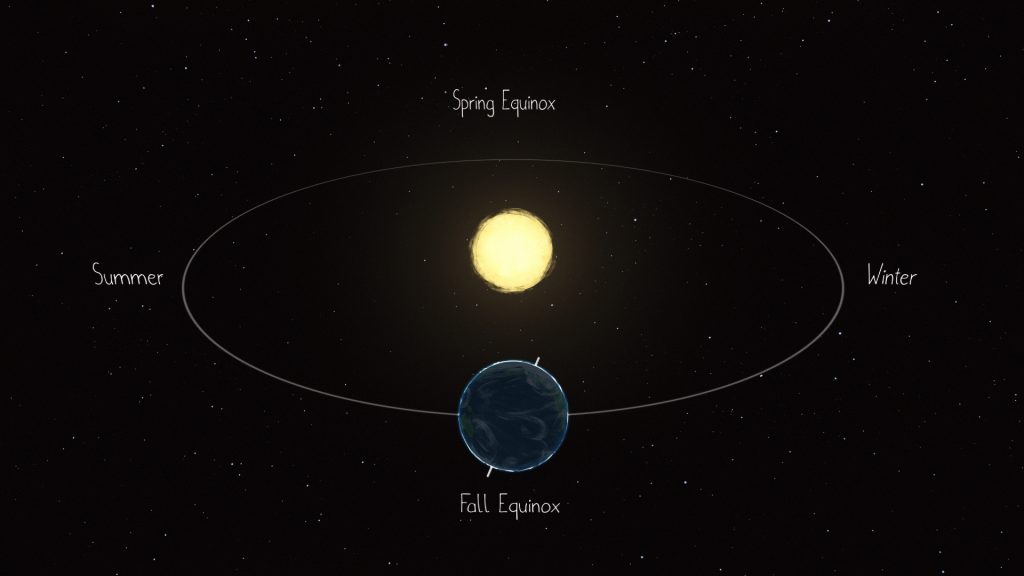
Constellations
This month, spring constellations like Ursa Major and Bootes will set quickly after sunset. Summer constellations are still visible, but are no longer dominating the night sky. Scorpius will set fairly early in the evening from northern latitudes, and will be nearly gone from the night sky by the end of September. Sagittarius will follow soon after it. The summer triangle of Vega, Deneb, and Altair will still be high in the early evening sky throughout the month. Vega is the brightest of these stars, and for most of September it will be the night’s brightest star (although Venus and Jupiter are still far brighter).
The constellations of the autumn sky will become more prominent as the month progresses. The most famous and useful of these is Cassiopeia, the Queen. Cassiopeia makes a distinctive “W” shape towards the northeast in the early evening this time of year, and makes a great landmark for navigating the sky. The W of Cassiopeia opens up nearly directly towards Polaris, the North Star. Leading Cassiopeia in her journey around Polaris is her husband, Cepheus, the King.
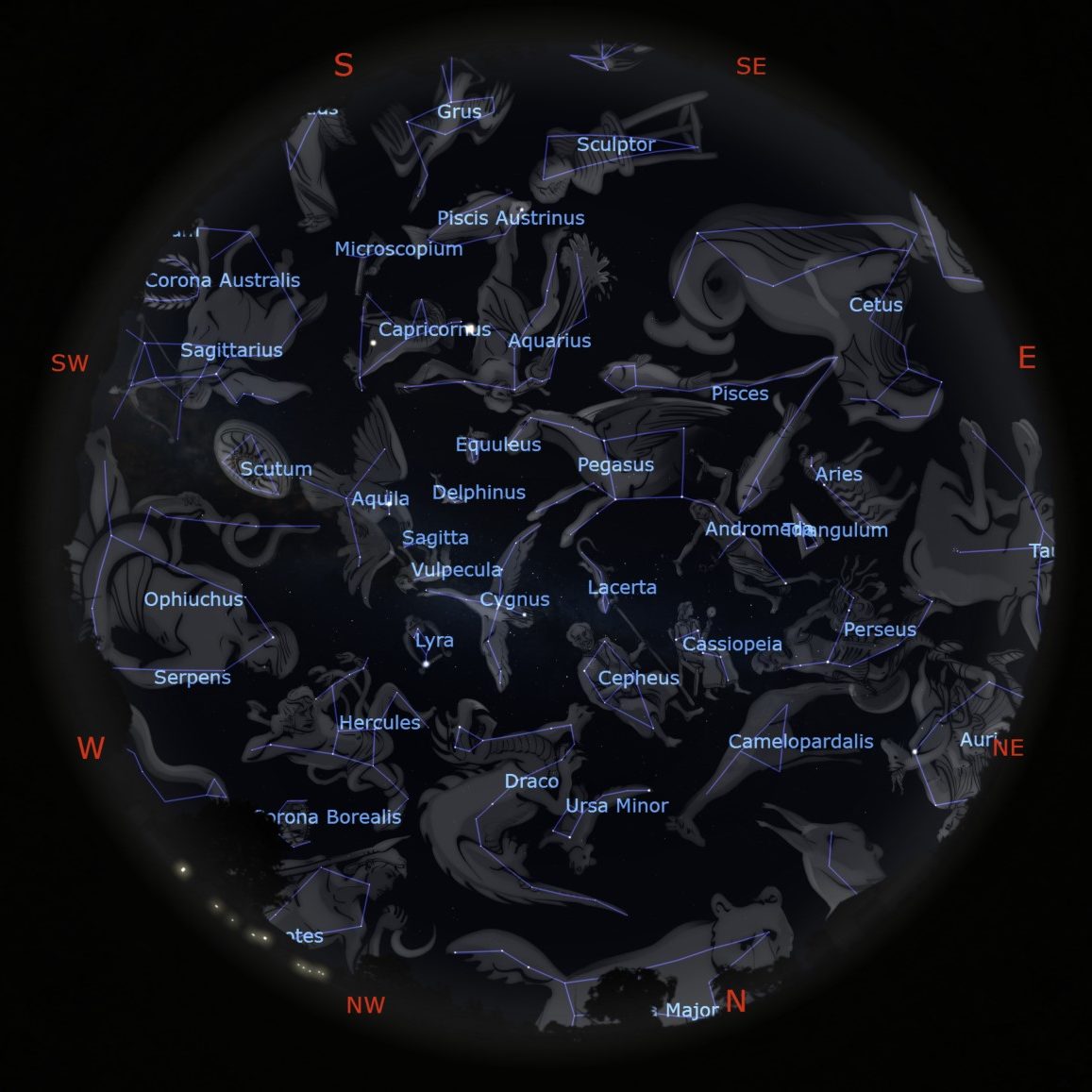
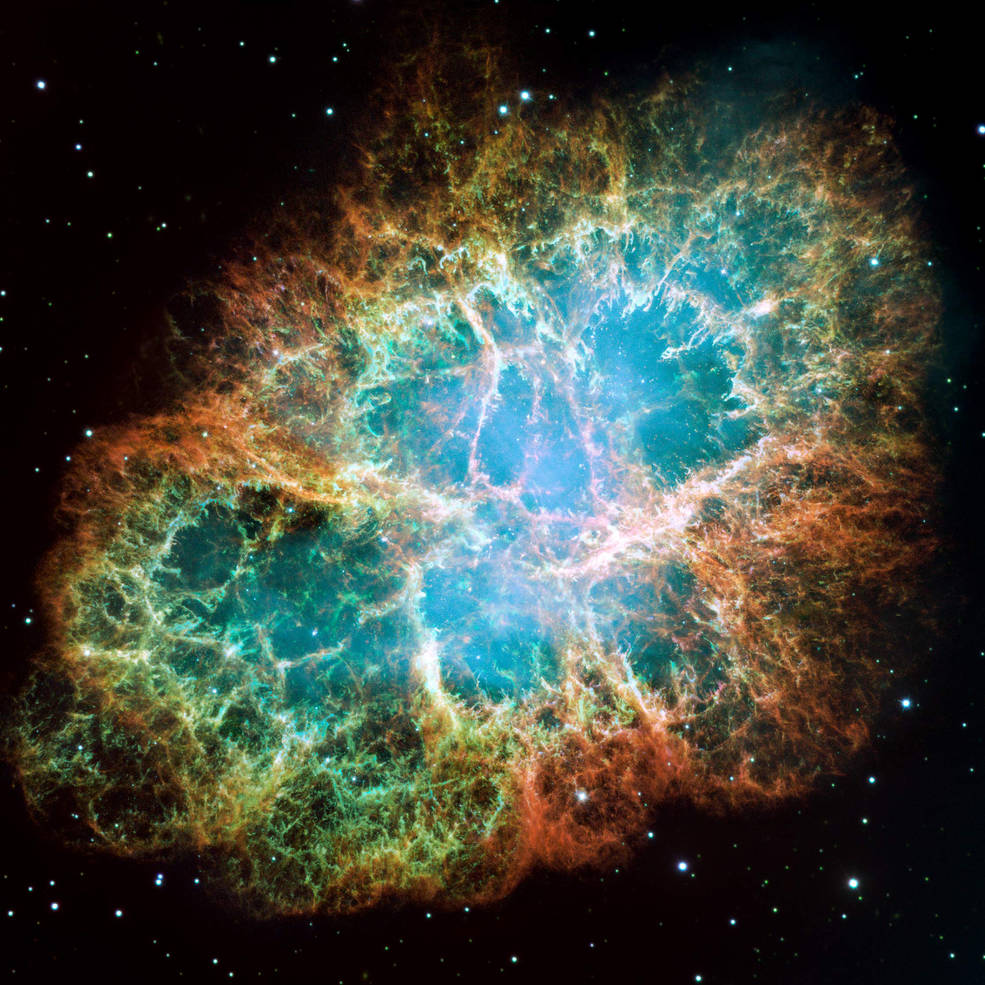
This Month in Astronomy History

September 1, 1979 | NASA’s Pioneer 11 becomes the first spacecraft to fly by Saturn.
Image: An artist’s depiction of Pioneer 11 flying by Saturn | NASA
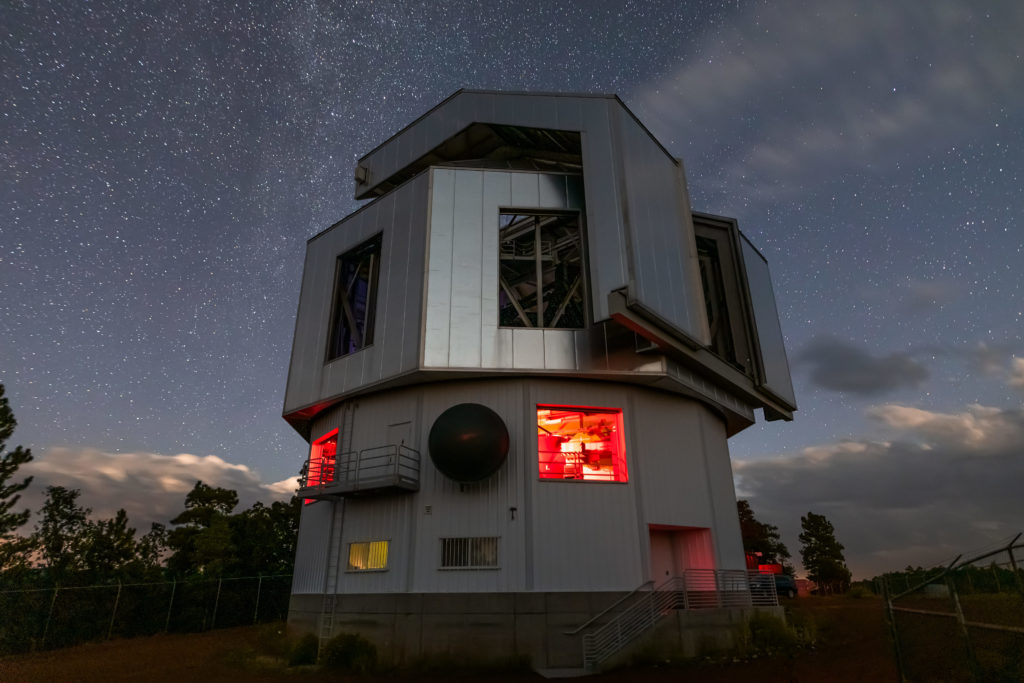
September 1, 2011 | Lowell Discovery Telescope (LDT) sees first light.
Image: The Lowell Discovery Telescope | Harun Mehmedinovic
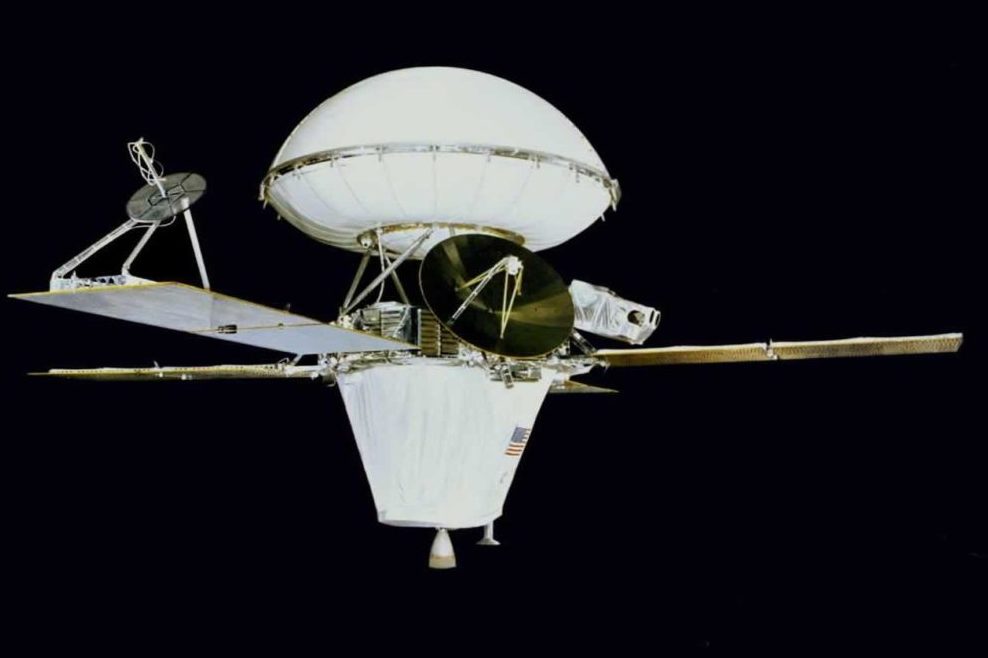
September 3, 1976 | Viking 2 becomes the first spacecraft to land on the surface of Mars.
Photo: Viking 2 | NASA
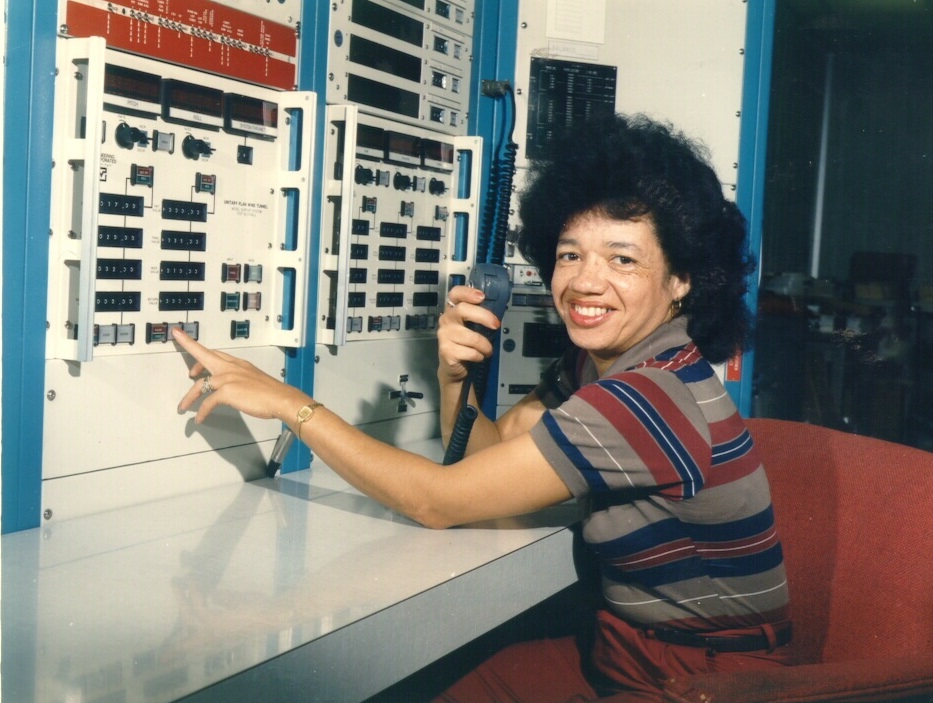
September 10, 1942 | Christine Darden, the first African-American woman to be promoted into the Senior Executive Service at NASA’s Langley Research Center, is born.
Image: Christine Darden in the control room of NASA Langley’s Unitary Plan Wind Tunnel in 1975 | NASA

September 11, 1758: Charles Messier sees patch of light—the Crab Nebula—that becomes first object in his catalog.
Photo: The Crab Nebula | NASA, ESA, J. Hester and A. Loll (Arizona State University)
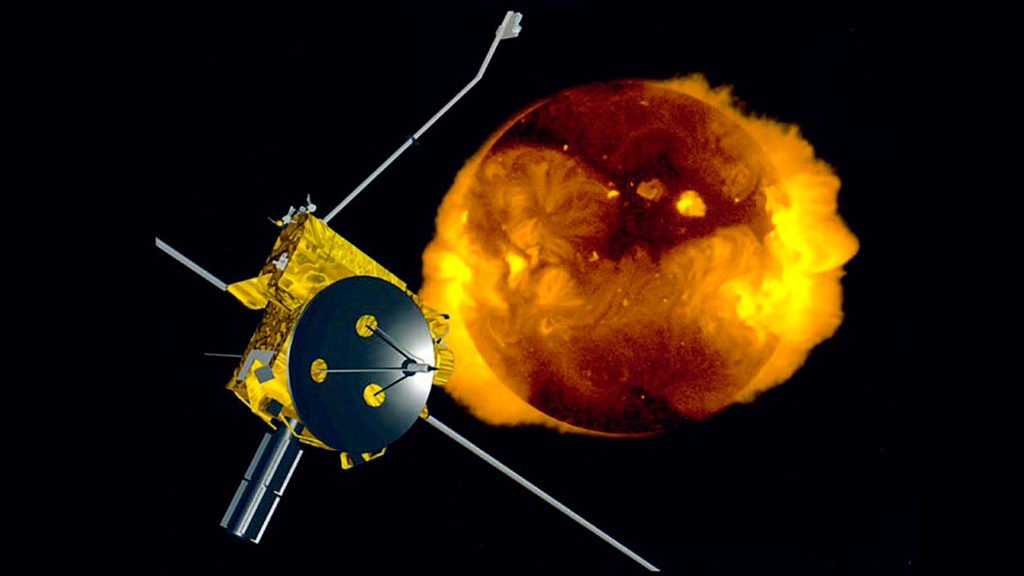
September 13, 1994: Joint ESA-NASA Ulysses probe begins mission to study the Sun.
Photo: An artist’s concept of Ulysses | NASA, ESA, J. Hester and A. Loll (Arizona State University)
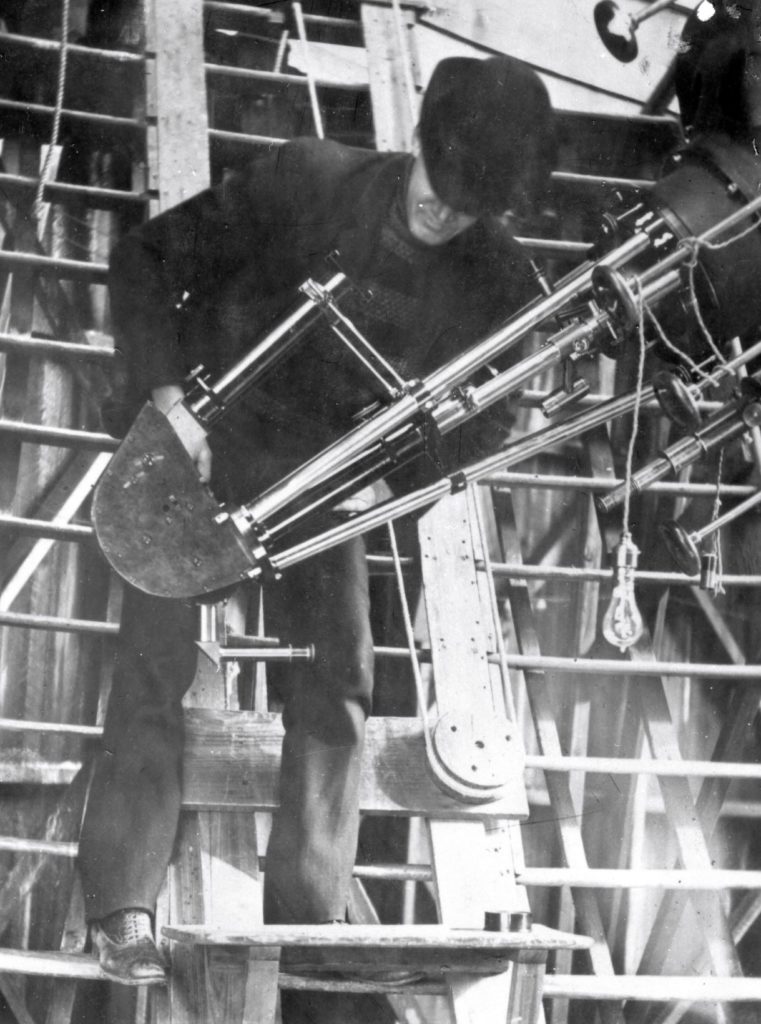
September 17, 1912: V.M. Slipher exposes first plates for his radial velocity study.
Photo: V.M. Slipher at spectrograph | Lowell Observatory Archives
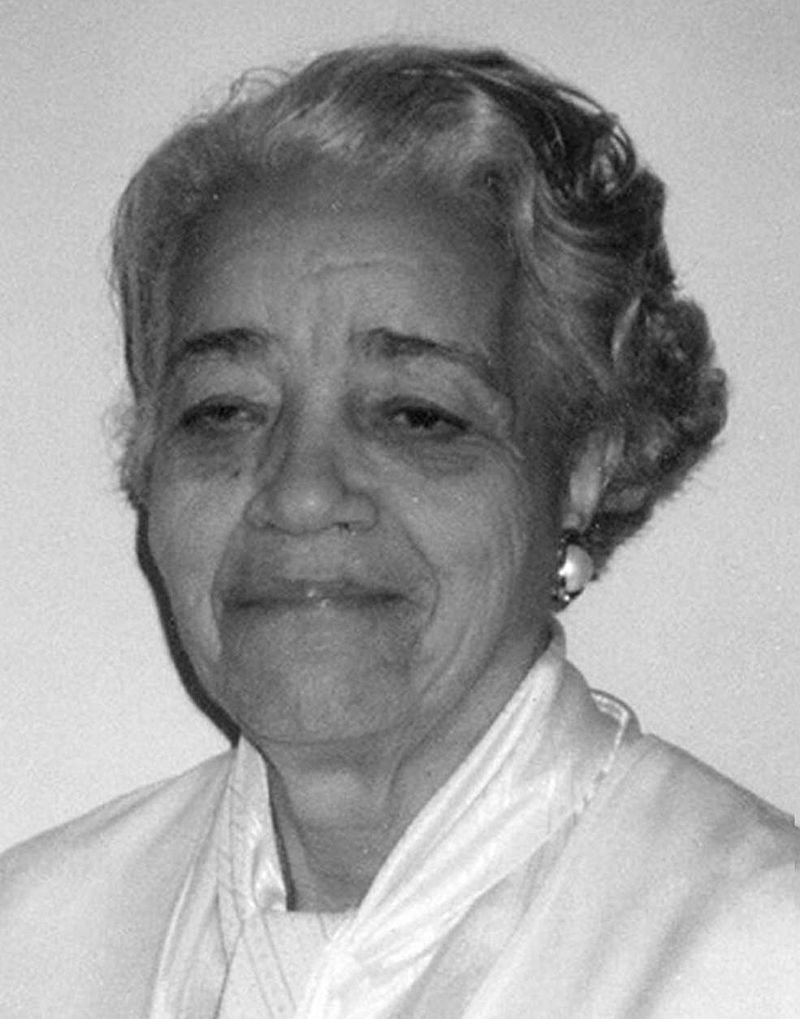
September 20, 1910: Dorothy Vaugn, mathematician, human computer, and NASA’s first African American supervisor, is born.
Photo: Dorothy Vaughan | NASA
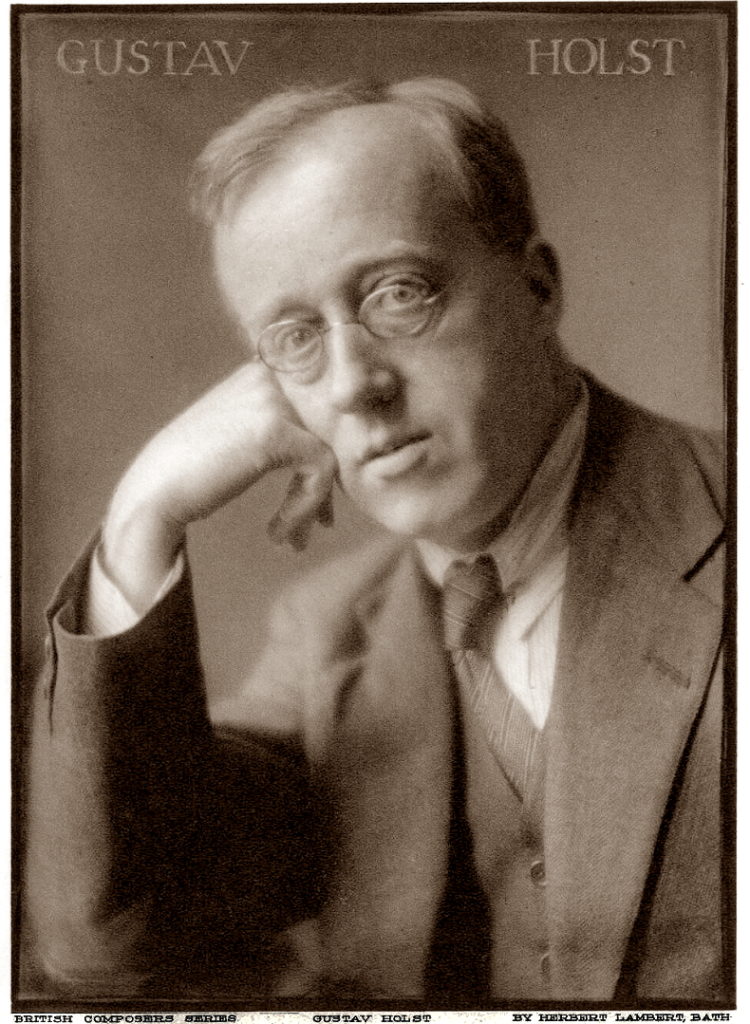
September 21, 1874: English composer Gustav Holst, best known for his orchestral suite The Planets, is born.
Photo: Gustav Holst | Herbert Lambert, National Portrait Gallery, PD-US
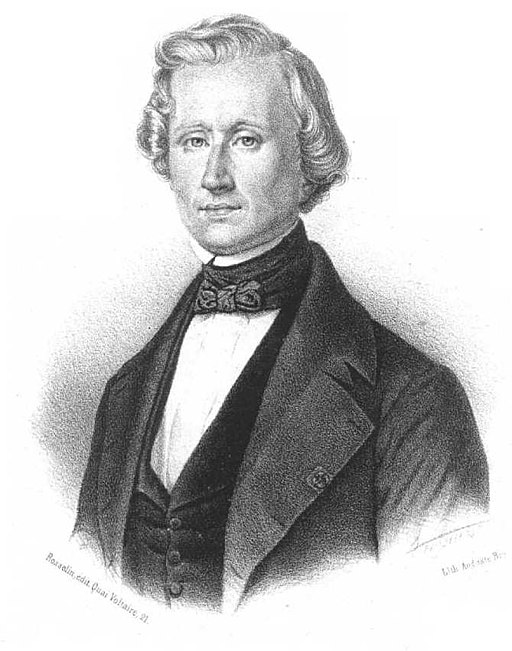
September 23, 1846: Neptune, first spotted by Galileo Galilei in 1613, is officially discovered by French astronomer Johann Galle Urbain Le Verrier.
Photo: Portrait of Ubaine le Verrier | Magnus Manske/Wikimedia Commons